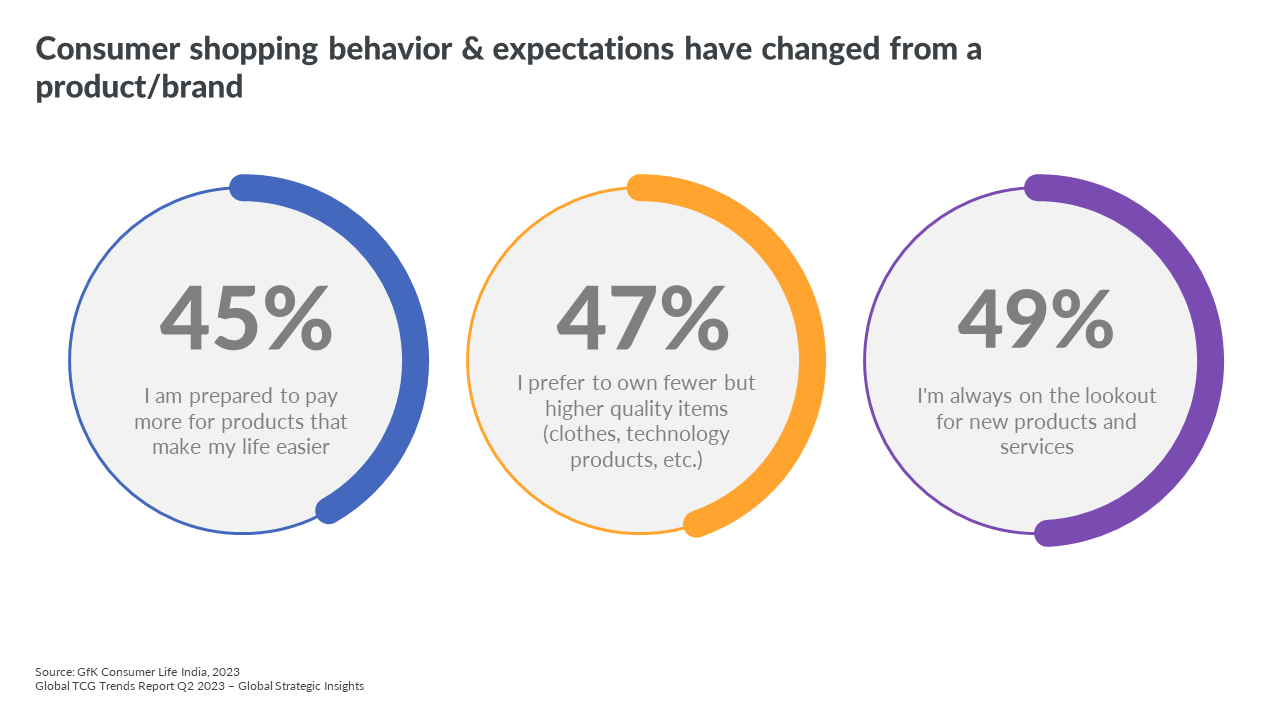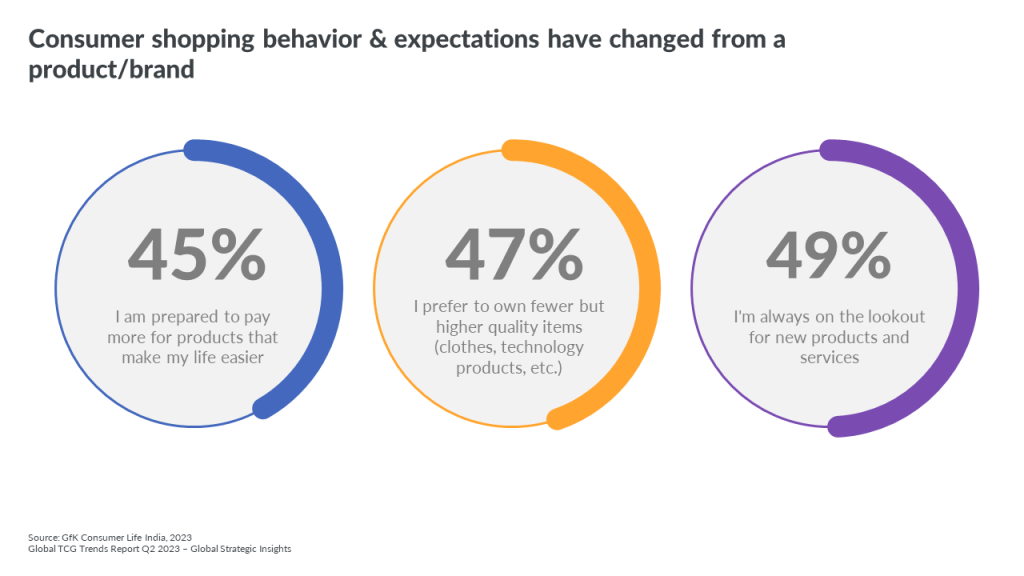India’s vision of a Digital Future
In recent years, India has been striding boldly into a digital future, a visionary path illuminated by our Prime Minister, Shri Narendra Modi. This digital transformation has been propelled by a series of initiatives undertaken by the government, the growth of online infrastructure, and the increasing accessibility to the Internet. Notably, India’s Unified Payment Interface (UPI) reached a historic milestone in August 2023, surpassing 10 billion transactions, establishing India as a global leader in the realm of digital payments.
The remarkable success of India’s digitalization narrative can be significantly attributed to groundbreaking initiatives such as the extended reach of electricity into households, both in bustling urban centers and the remotest rural corners. These initiatives have democratized access to digital products and knowledge, ensuring that the benefits of this digital revolution are not confined to a select few. As of December 2022, the nation boasts over 700 million active internet users, with rural regions experiencing a meteoric 44% higher users that urban regions.
With this rapid technological advancement, our lives are undergoing a profound transformation. At the heart of this transformation is the Internet of Things (IoT), which has ushered in a new era, especially within our homes. The appetite for IoT adoption has soared, driven, in part, by the challenges posed by the pandemic. This technological wave has unleashed a wave of innovation, leading to the proliferation of smart devices, ushering in an era where ‘smart homes’ are no longer a dream but a tangible reality.
Why are people adopting “Smart Homes”? – The IoT revolution has redefined Modern Living
The term ‘smart home’ is synonymous with modern living, where every aspect of life can be intelligently interconnected. A smart home is one in which everything is connected and controlled through technology. Smart home solutions are typically Wi-Fi-enabled and can be managed through smartphone apps, tablets, or smart speakers. These systems encompass a wide range of devices, including door locks, TVs, thermostats, cameras, monitors, lighting, and household appliances like refrigerators, washing machines, and vacuum cleaners. Users can create customized schedules and controls for these devices via mobile or networked devices.
What was once a futuristic dream has now become a reality, allowing us to remotely clean our homes, wash clothes, control temperature, manage lighting, and even secure our abodes, irrespective of our physical location. Smart homes represent the epitome of contemporary living, offering everything from voice-activated appliances to advanced energy management and enhanced home security. The convenience and security they provide have made them an enticing proposition for consumers worldwide.”
The Appeal of Smart Homes
Why Smart Homes Are on the Rise? – Consumer interest in smart homes is on the rise globally. GfK Global Consumer Life Study 2023 revealed a growing enthusiasm for smart homes, with fewer consumers exhibiting resistance to embracing this technology. Barriers that once hindered smart home adoption, such as privacy concerns and network connectivity issues, are gradually diminishing, making way for the seamless integration of smart technology into our lives. In India, three major barriers are the cost of purchase, safety concerns, and privacy issues. However, in recent years, Indian consumers’ expectations and buying behaviors have evolved, with more individuals willing to explore products that simplify their lives.

Driving the Smart Home Market: Understanding Consumer Segments
The Role of Personal Values in India’s Tech and Economic Advancement is becoming instrumental. India’s remarkable economic and technological progress is intrinsically linked to the personal values of its people. These values profoundly influence lifestyles and consumer choices. A notable segment of the population, often referred to as ‘Aspirers,’ embodies India’s ambition, placing it above leisure. Unlike global trends, Aspirers prioritize fulfilling work over simply enjoying life, according to the GfK Global Consumer Life Study 2023. In India, the share of Aspirers stands at 55% vs 40% globally, a number that continues to climb, particularly among the younger population aged between 30 and 44 (61%), including Gen Z and those.
Aspirers are not just tech-savvy but also enthusiastic about embracing smart home products. For them, the cost is less of a barrier, as they recognize the value of these innovations. It is essential to recognize that Gen Z, a significant component of Aspirers, constituting a third of India’s population, will continue to shape and drive the adoption of smart home technology. Their preferences, behaviors, and choices are poised to dominate the market for the next 2 to 3 decades. The wave of technological transformation is inextricably linked to the aspirations of the people of India, providing context and depth to the burgeoning smart home trend.
A World of Possibilities: Smart Devices Transforming Lives
Smart devices have rapidly reshaped the landscape of smart homes, riding the wave of technological innovation:
Smart home product adoption rates in India vary due to factors like affordability, availability, accessibility, and acceptability. This diverse landscape offers substantial growth opportunities for product manufacturers, solution providers, service companies, and the real estate sector. To ensure sustained growth, innovation, consumer education, and ecosystem simplification are essential.
According to GfK Global Consumer Life Study 2023, a striking 50% of intended smart appliance buyers in the next two years will be first-time users, emphasizing the importance of effective marketing and messaging to capture this burgeoning market.
Charting the Path for Smart Homes: Key Drivers of Smart Home Growth
- Technological Innovation: Smart TVs at the Forefront
Smart TVs have emerged as a key driver of smart home adoption in India. Features like voice control, screen mirroring, gaming capabilities, app stores, and content streaming have made them immensely popular. In 2023, a remarkable 90% of TVs sold are smart TVs. This trend extends beyond major cities, as even smaller towns are embracing this technology. The 83% of Indians who watch television most days or at least once a week are driving this demand, with both first-time buyers and those upgrading their devices contributing to this trend. Brands must prioritize quality and service to foster customer loyalty.
- AI-Enhanced Washing Machines
AI-driven washing machines have brought unprecedented convenience to laundry routines. These machines utilize sensors to weigh laundry loads and optimize water, detergent, and rinsing time. Some models even employ machine learning to suggest wash cycles based on user behavior. Indian consumers, particularly Gen Z and Millennials, appreciate these benefits and are increasingly adopting these AI-driven products - Smart Cleaning
Robotic vacuum cleaners have witnessed a surge in demand, especially during the pandemic when many found themselves managing housework without external assistance. These devices offer features like app-based auto-cleaning, room-specific cleaning, and voice commands. Consumers from various demographic segments have embraced these innovations, making them a household staple.
- Smart Lighting
AI-powered lighting systems that adjust brightness based on room illumination have garnered the interest of 31% of Indian consumers who plan to purchase more smart lighting in the coming years, a percentage significantly higher than the global average. - Security Cameras and Smart Locks
AI-powered security cameras with features like facial recognition and smart locks have enhanced home security. Around 30% of Indian consumers are planning to adopt these products in the near future, indicating substantial potential for both product and service providers.
Real Estate Sector’s Embrace of Smart Homes
The real estate sector in India has recognized the allure of smart homes. Builders are actively engaging with tech-savvy buyers, particularly millennials, who value the benefits of smart homes. Gen Z, growing up with smart devices, is poised to invest in these properties, expecting remote control and monitoring capabilities. The trend is set to continue, given the heightened consumer interest in energy efficiency and utility.
The path to sustained growth is to meet consumer expectations and drive business success.
Smart home products need to align with certain core principles:
- Usefulness and Convenience: Smart home products should offer practical value to users. Consumers are willing to pay a premium for products that simplify their lives. For instance, smart robot vacuum cleaners, although more expensive than traditional models, have become a mass-market success due to their time-saving capabilities.
- Security and Trustworthiness: Ensuring the safety and data protection of connected home devices is paramount. Building trust among consumers is essential, and transparent communication about safety and data protection features is necessary to build credibility.
- Compatibility and Integration: Compatibility issues are a significant concern for consumers. Smart home brands need to ensure a seamless experience for users, minimizing any difficulties associated with device setup and connectivity disruptions.
- Innovation and High Performance: Brands should focus on offering innovative features that enhance user experience and deliver long-term value. Whether it’s through increased convenience, superior performance, or cost and time savings, smart home technology needs to demonstrate its enduring worth.”
In summary, businesses need to be aware of the attitudes of Indian consumers towards using smart products against global consumers as Indians are more conscious of many aspects:
- Look and feel of the product,
- Product costs,
- They need a seamless experience (even accessing smartphones while driving), and
- They lose interest in products if they are not simple to use.

The Future: Leveraging AI for Greater Potential
As technology evolves, smart homes in India will continue to benefit from artificial intelligence and machine learning. These advancements will render smart homes even more intuitive and responsive to residents’ needs, personalizing their living spaces. The future holds exciting possibilities for smart home technology.
Conclusion: The Bright Future of Smart Homes in India
The smart home market in India has made significant strides in recent years. Despite challenges like high costs and complexity, consumer demand for comfort, security, and energy efficiency is driving this market’s expansion.
The future of smart homes in India is indeed promising, with emerging trends and evolving technology poised to make lives more comfortable and provide a superior lifestyle. India’s massive population, coupled with the increasing availability and adoption of 5G services, will further enhance user experiences and ensure a bright future for smart homes. Brands and retailers should continue to innovate, delivering high-quality products that simplify consumers’ lives, tapping into the power of word-of-mouth recommendations, and fostering future growth in this dynamic market.
– Anant Jain, Head of Market Intelligence- India, GfK – an NIQ Company




